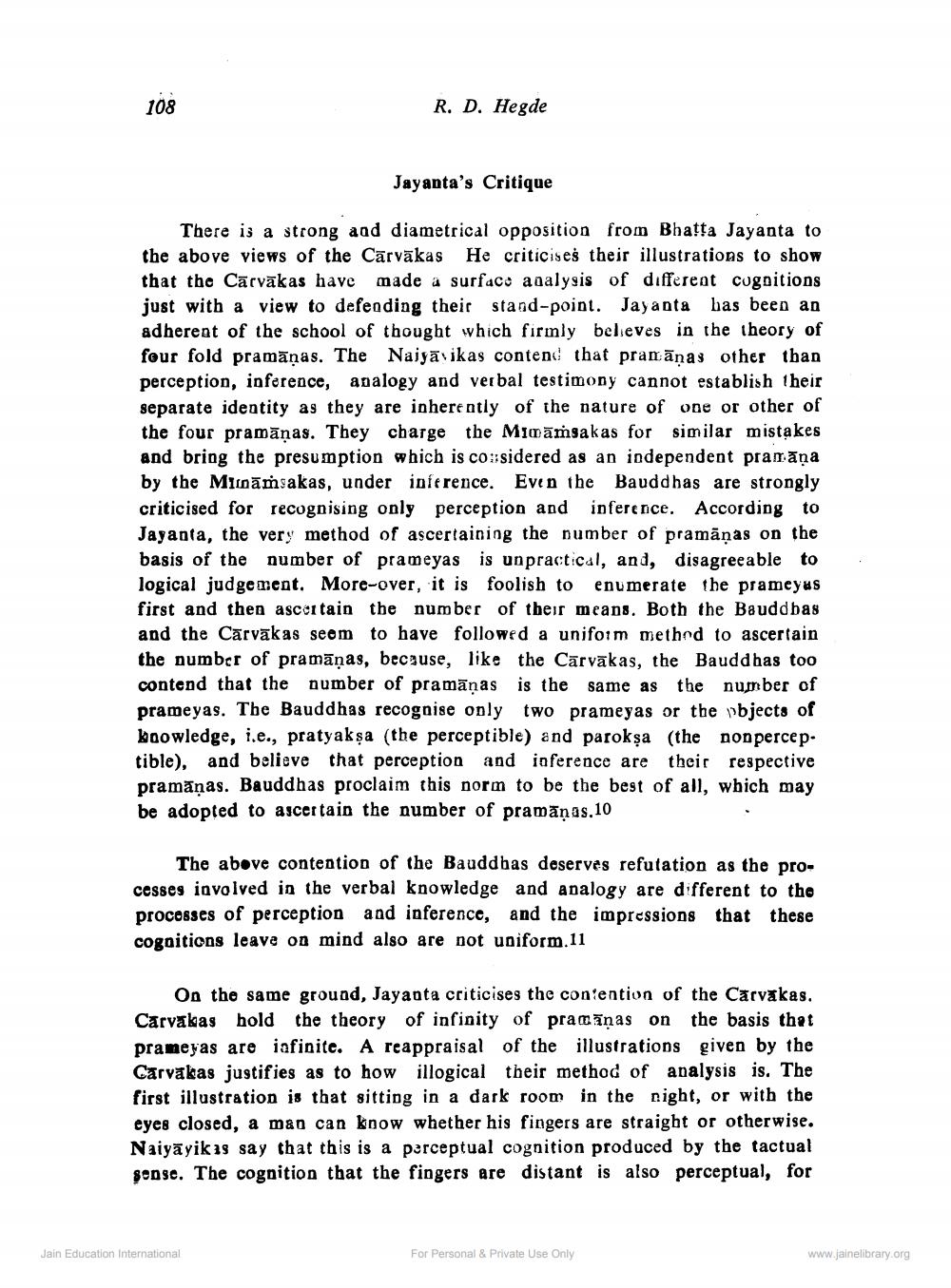________________
108
R. D. Hegde
Jayanta's Critique
There is a strong and diametrical opposition from Bhatta Jayanta to the above views of the Cārvākas He criticises their illustrations to show that the Cārvākas have made a surfac: analysis of differeot cogoitions just with a view to defending their stand-point. Jayanta bas been an adherent of the school of thought which firmly believes in the theory of four fold pramāṇas. The Naiyāvikas contend that pranānas other than perception, inference, analogy and verbal testimony cannot establish their separate identity as they are inherently of the nature of one or other of the four pramāņas. They charge the Mināmsakas for similar mistakes and bring the presumption which is co::sidered as an independent pramāņa by the Mināmsakas, under inference. Even the Bauddhas are strongly criticised for recognising only perception and inference. According to Jayanta, the very method of ascertaining the number of pramāṇas on the basis of the number of prameyas is unpractical, and, disagreeable to logical judgement. More-over, it is foolish to enumerate the prameyas first and then ascertain the number of their means. Both the Bauddbas and the Cārvākas seem to have followed a uniform method to ascertain the number of pramāņas, because, like the Cārvākas, the Bauddhas too contend that the number of pramāņas is the same as the number of prameyas. The Bauddhas recognise only two prameyas or the objects of koowledge, i.e., pratyakșa (the perceptible) and paroksa (the nonpercep. tible), and believe that perception and inference are their respective pramāņas. Bauddhas proclaim this norm to be the best of all, which may be adopted to ascertain the number of pramānas.10
The above contention of the Bauddhas deserves refutation as the processes involved in the verbal knowledge and analogy are different to the processes of perception and inference, and the impressions that these cogaitions leave on mind also are not uniform. 11
On the same ground, Jayanta criticises the contention of the Carvakas. Carvakas hold the theory of infinity of pracīņas on the basis that prameyas are iafinite. A reappraisal of the illustrations given by the Carvakas justifies as to how illogical their method of analysis is. The first illustration is that sitting in a dark room in the night, or with the eyes closed, a man can know whether his fingers are straight or otherwise. Naiyāyik as say that this is a perceptual cognition produced by the tactual sense. The cognition that the fingers are distant is also perceptual, for
Jain Education International
For Personal & Private Use Only
www.jainelibrary.org




